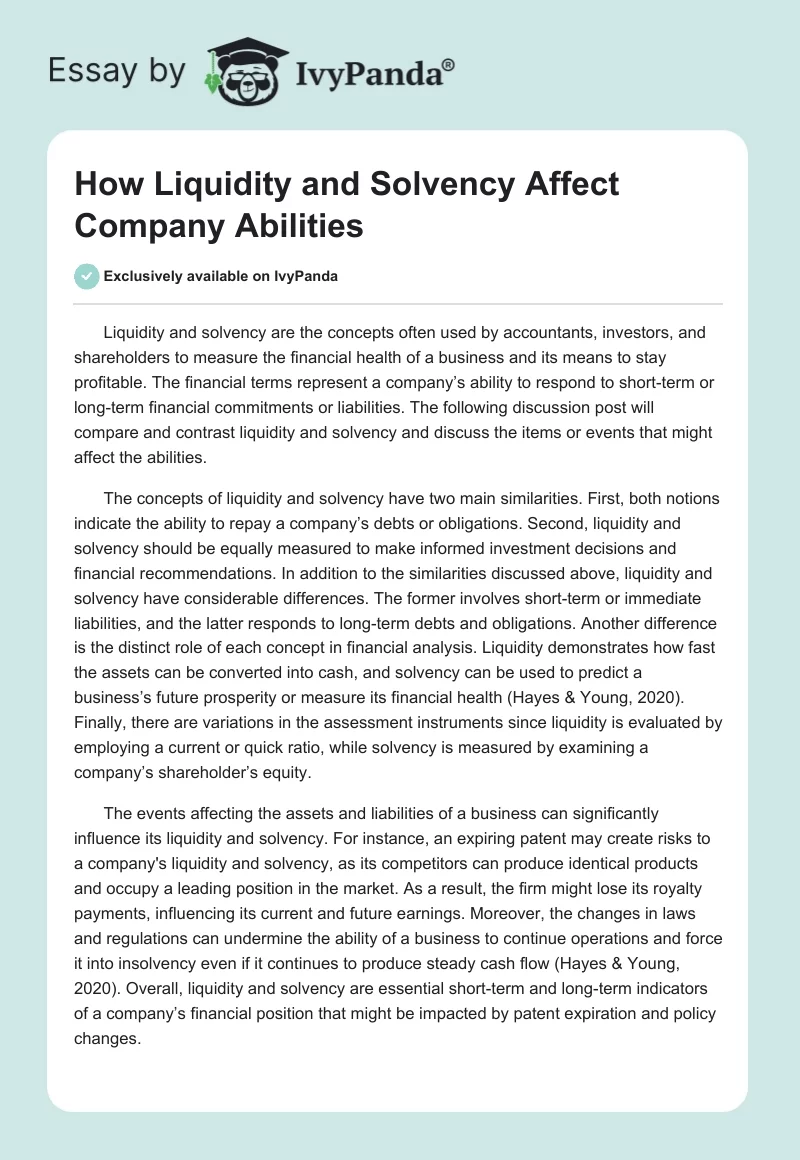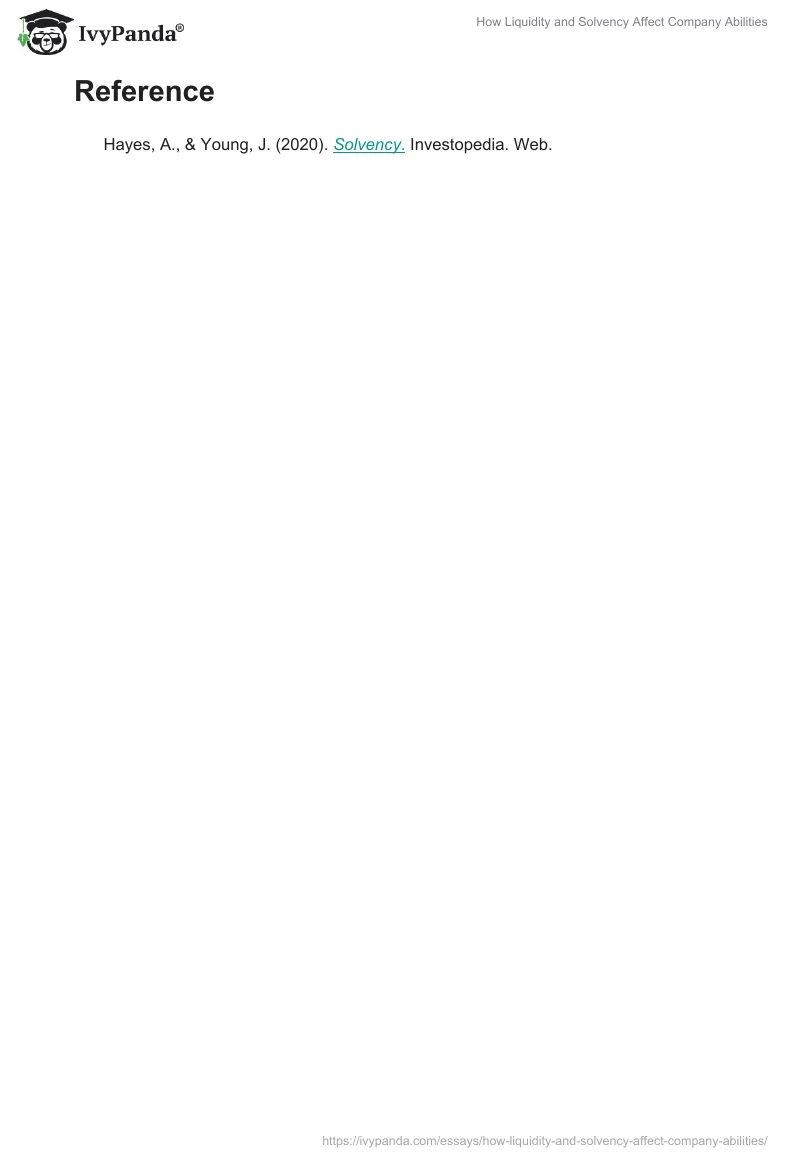Liquidity and solvency are the concepts often used by accountants, investors, and shareholders to measure the financial health of a business and its means to stay profitable. The financial terms represent a company’s ability to respond to short-term or long-term financial commitments or liabilities. The following discussion post will compare and contrast liquidity and solvency and discuss the items or events that might affect the abilities.
The concepts of liquidity and solvency have two main similarities. First, both notions indicate the ability to repay a company’s debts or obligations. Second, liquidity and solvency should be equally measured to make informed investment decisions and financial recommendations. In addition to the similarities discussed above, liquidity and solvency have considerable differences. The former involves short-term or immediate liabilities, and the latter responds to long-term debts and obligations. Another difference is the distinct role of each concept in financial analysis. Liquidity demonstrates how fast the assets can be converted into cash, and solvency can be used to predict a business’s future prosperity or measure its financial health (Hayes & Young, 2020). Finally, there are variations in the assessment instruments since liquidity is evaluated by employing a current or quick ratio, while solvency is measured by examining a company’s shareholder’s equity.
The events affecting the assets and liabilities of a business can significantly influence its liquidity and solvency. For instance, an expiring patent may create risks to a company’s liquidity and solvency, as its competitors can produce identical products and occupy a leading position in the market. As a result, the firm might lose its royalty payments, influencing its current and future earnings. Moreover, the changes in laws and regulations can undermine the ability of a business to continue operations and force it into insolvency even if it continues to produce steady cash flow (Hayes & Young, 2020). Overall, liquidity and solvency are essential short-term and long-term indicators of a company’s financial position that might be impacted by patent expiration and policy changes.
Reference
Hayes, A., & Young, J. (2020). Solvency. Investopedia. Web.


